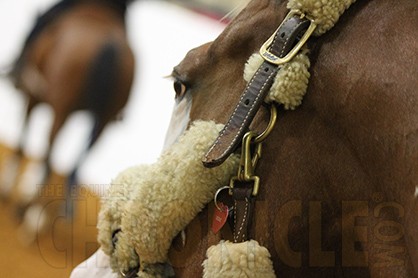Being Overweight Doesn’t Mean Your Horse Has a Metabolic Issue
By: Equine Cushing’s and Insulin Resistance Group Inc./Eleanor M. Kellon, VMD
The vast majority of us are well familiar with how easy it is to gain weight with the wrong foods, or simply too much food, and how hard it can be to lose it. The same is true for most horses.
In people, it is generally accepted that weight gain can lead to the development of insulin resistance and type II diabetes, but that’s where parallels with the equine situation end. As obesity develops in people, so does a clear picture of higher inflammatory cytokines circulating in their blood, and increasing insulin levels reflecting insulin resistance. This simply does not hold true for horses.
Banase, et al., [2016], found that markers of inflammation in skeletal muscle were actually lower in horses that were obese, and lowest of all in obese horses with elevated insulin — the exact opposite of what would be expected in a human.
What about obesity causing high insulin and Equine Metabolic Syndrome (EMS)? Nope.
Lindase, et al., [2016], induced obesity in horses that already had elevated insulin by feeding additional fat, but the resultant 10% weight gain did not worsen insulin resistance. Similarly, Bamford, et al., [2016], studied normal horses and induced obesity by feeding excess fat with or without a once-daily high simple carbohydrate meal. Again, the weight gain did not result in insulin resistance in either group.
Contrary to expectations, the horses receiving the high-carb meals actually had better insulin sensitivity. This has been reported in earlier studies and represents an adaptation to the higher-carbohydrate feeding.
If obesity doesn’t cause Equine Metabolic Syndrome, where did that idea come from?
As mentioned above, there is a connection in people, but it’s also true that you will find a higher percentage of obese horses with abnormally high insulin than horses of normal weight. However, the reason for this is that horses with insulin resistance gain weight more easily, not because the weight gain causes EMS.
This doesn’t mean you can just ignore it if you horse is overweight. Excess weight puts a lot of unnecessary strain on the heart and skeletal system, reduces exercise tolerance, makes it more difficult to breathe, and interferes with temperature regulation in the heat or when exercised. These all improve with weight loss. The effects of weight loss on insulin sensitivity are not as clear.
Studies have shown reduction in baseline insulin and/or insulin resistance with weight loss induced by diet and/or exercise, but they differ in regard to whether there is a difference in effectiveness between dieting versus exercise. Comparing the studies is complicated by different breeds, horse versus pony, different diets, and different degrees of weight loss. Suffice it to say that weight loss won’t hurt the situation with EMS and might help, particularly if exercise is included.
Obesity per se does not cause laminitis either — high insulin does. Being normal weight won’t protect from laminitis, but a normal weight in conjunction with a physiologically sound trim will certainly help to reduce the damage it causes.
In the chicken or egg world of obesity and EMS, it’s the EMS that comes first.
About ECIR Group Inc.
Started in 1999, the ECIR Group is the largest field-trial database for PPID and EMS in the world and provides the latest research, diagnosis, and treatment information, in addition to dietary recommendations for horses with these conditions. Even universities do not and cannot compile and follow long term as many in-depth case histories of PPID/EMS horses as the ECIR Group.
In 2013 the Equine Cushing’s and Insulin Resistance Group Inc., an Arizona nonprofit corporation, was approved as a 501(c)3 public charity. Tax deductible contributions and grants support ongoing research, education, and awareness of Equine Cushing’s Disease/PPID and EMS.
THE MISSION of the ECIR Group Inc. is to improve the welfare of equines with metabolic disorders via a unique interface between basic research and real-life clinical experience. Prevention of laminitis is the ultimate goal. The ECIR Group serves the scientific community, practicing clinicians, and owners by focusing on investigations most likely to quickly, immediately, and significantly benefit the welfare of the horse.











